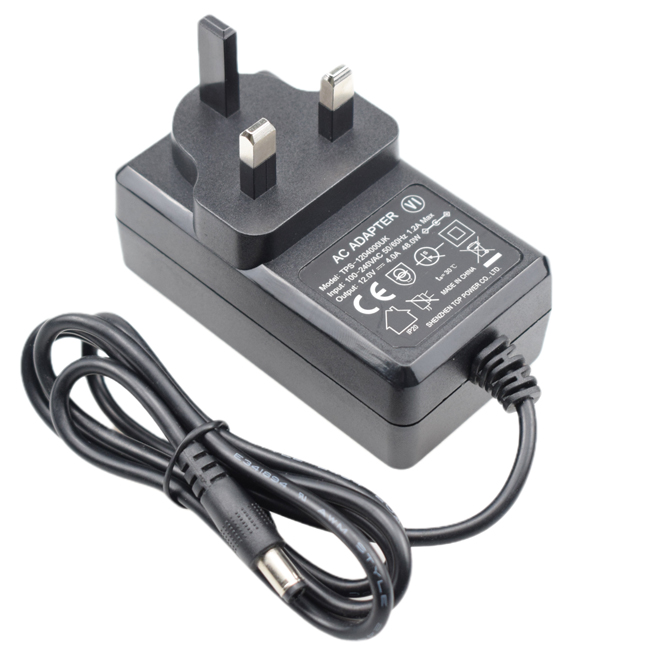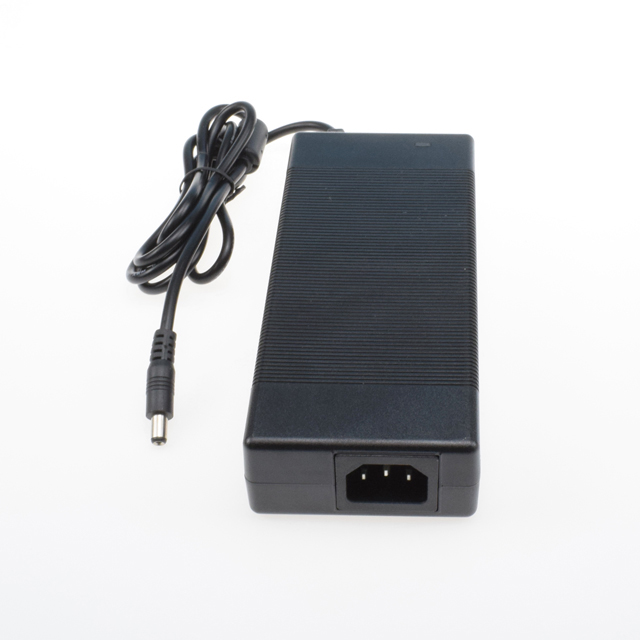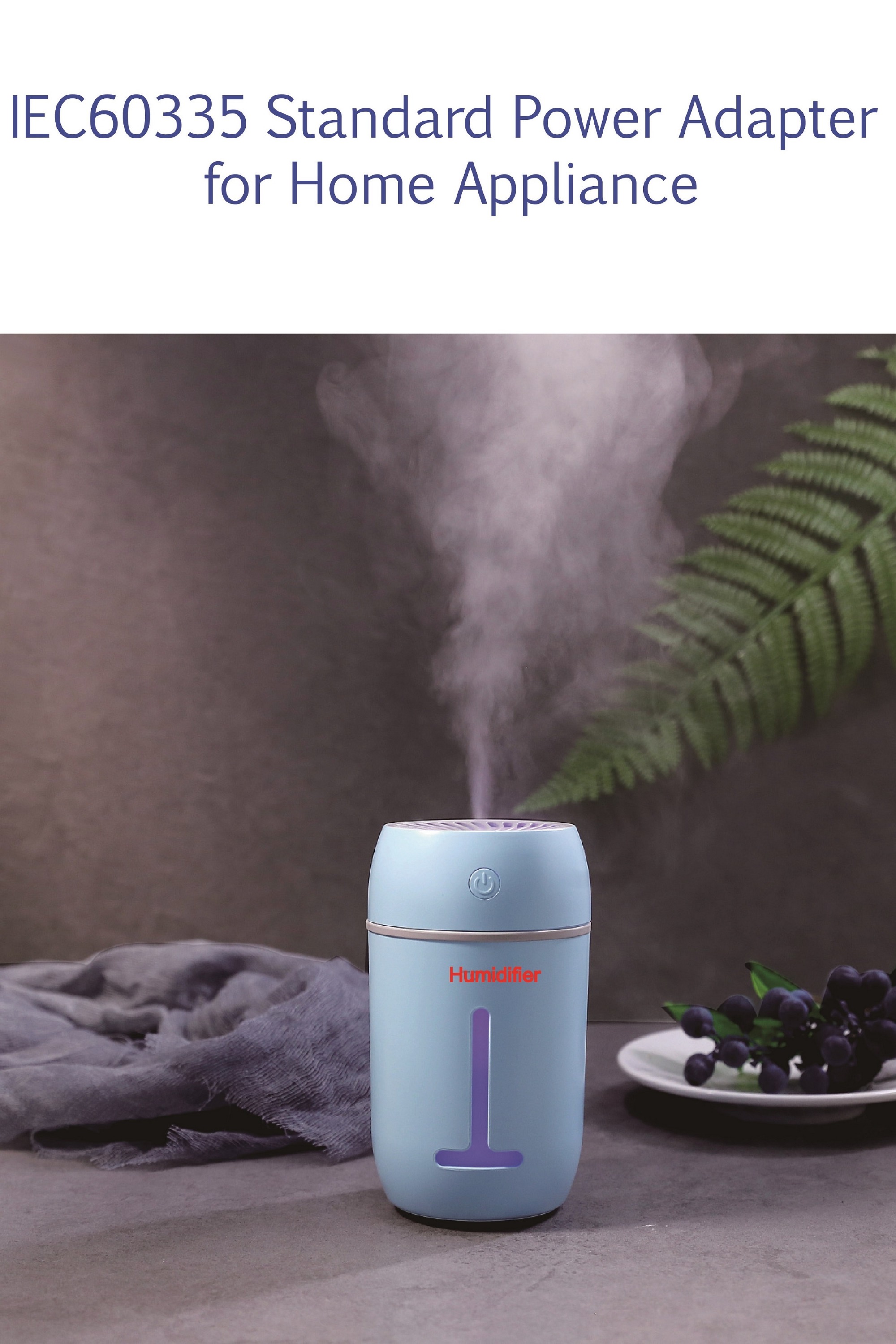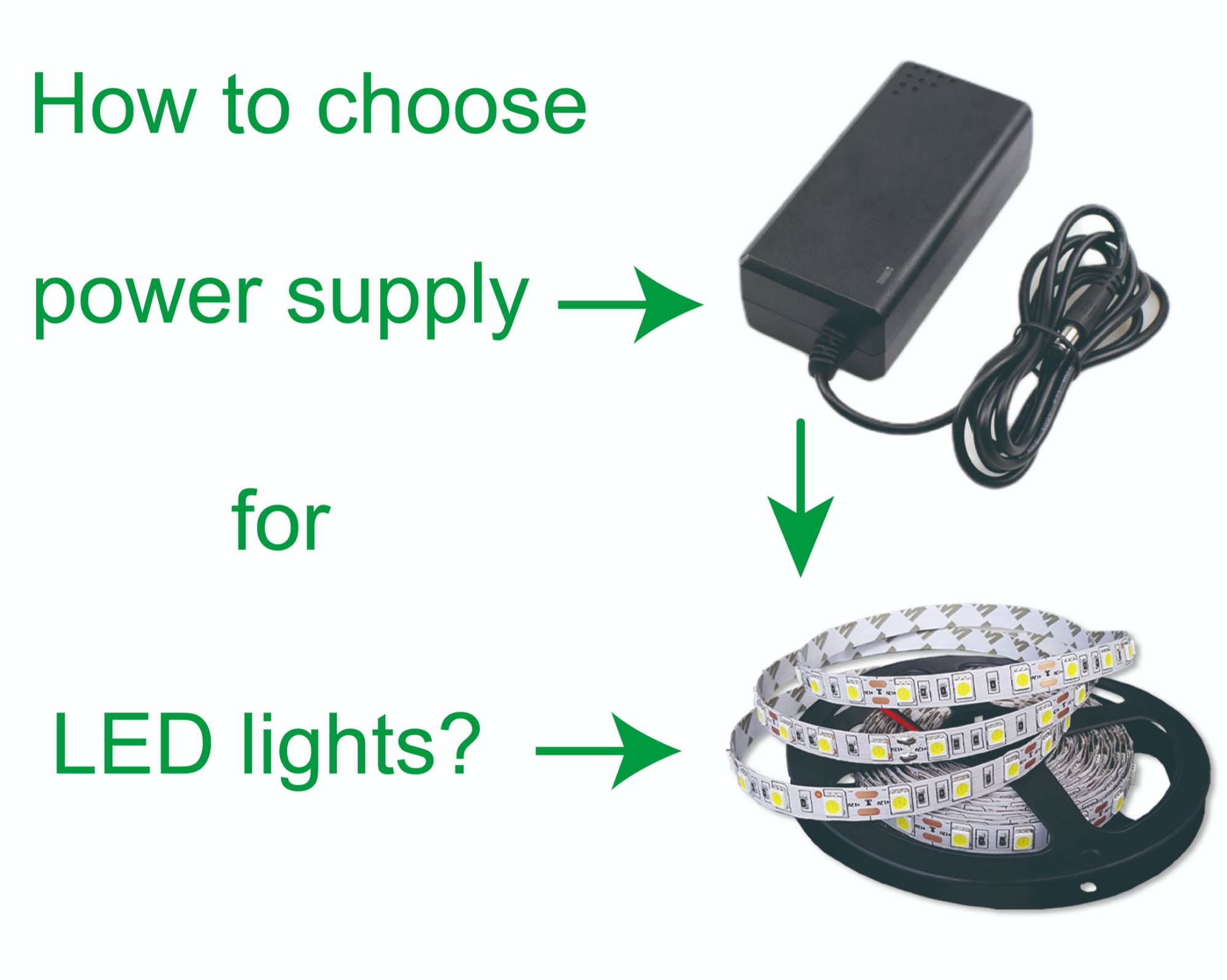a. Generally made of case, transformer, inductor, capacitor, IC, PCB and other components.
a-1. Usually, switching power adapter shell is plastic, also it could be metal shell. The main material of power adapter shell have pure PC, ABS, ABS+PC.

Pure PC has ultra-high strength, wide temperature range, high transparency and free dyeing. So for it is very good for the power adapter to be in various colors. Also, this material is also heat-resistant, impact-resistant, flame-retardant, fatigue-resistant, weather-resistant, tasteless and odorless. It is harmless to the human body and line with hygiene and safety.
ABS material has low strength and temperature resistance. Under normal operating, the largest operating temperature is 60℃, worse than PC. ABS is generally used in household appliances. Like most polymer, ABS is flammable (only 22% oxygen index ), it produces a lot of smoke when catching fire.
ABS+PC, takes the characteristics of the former two. it has excellent molding performance, good fluidity and high strength. It has good size stability and surface gloss, easy to process, paint, color. It also performs secondary processing such as metal spraying, electroplating, welding and bonding.
In the selection of the material of the switching power adapter shell, it bases on pure PC material and PC+ABS.
a-2. Power transformer is a soft magnetic electromagnetic component. It consists of skeleton, winding coil, iron core and insulating tape. The common core shapes of transformers are generally E-type and C-type cores.

Common transformer cores are generally made of silicon steel sheets. Silicon steel is a kind of steel containing silicon, and its silicon content is 0.8-4.8%.
Silicon steel itself is a magnetic material with strong magnetic permeability. In the energized coil, it can generate a large magnetic induction intensity. So that the volume of the transformer can be smaller.
a-3. The structure of an inductor is like that of a transformer, but with only one winding. An inductor has a certain inductance, it only resists changes in current flow.

a-4. Capacitors have two metal poles, sandwiched by insulating material. Common material includes ceramic, chip ceramic, and aluminum electrolytic.

Ceramic features are small capacity, high resistance voltage, non-polarity, low ESR, high frequency. Ceramic disadvantages are overvoltage, welding deformation, unstable temperature.
Electrolytic features are large capacity, medium withstand voltage, two poles, high ESR. Electrolytic disadvantages are overvoltage, opposite breakdown, physical open circuit, liquid volatilization.
a-5. IC chip include PWM /PFM Control IC and IC optocoupler.

The raw material of the IC chip is wafer. The composition of the wafer is silicon. The silicon derives from quartz sand, and the silicon element (99.999%) purifies wafer.
a-6. PCB includes pattern, dielectric layer, hole, solder mask, silk screen, surface finish.

Usually the color of the PCB is green or brown, which is the color of the solder mask. It is an insulating protective layer. It can protect the copper wire. It prevents short circuit caused by wave soldering, and save the amount of solder. A silk screen is also printed on the solder mask. Usually, text and symbols (white) on PCB shows the position of each part on the board.
In the final product, PCB has IC, diodes, capacitors, and other electronic parts. Through the connection of wires, electronic signal connections and due functions can emerge.
b. According to the connection method, it can be wall type and desktop type.
b-1. Wall type switching power supplies include two categories. One is a vertical wall-plug type, with parallel pcb board and the AC input plug. Another is a horizontal wall-plug type, for not parallel pcb and ac plug.

b-2. Wall-mounted power supplies generally don't have ground cable. According to different countries' ac input 100-240v, ac plugs have different specifications. Such as: Chinese, American, European, British etc
b-3. The difference among same output desktop power adapter is the AC input socket. It Refers to the appliance socket IEC60320 electrical standard in the market. There are three common types of AC sockets. Plum blossom socket, eight-character socket, pin-shaped socket.

Part two: Types
c. Constant voltage power adapter
c-1. It has rated output current working range. Also, its output voltage must keep within the range of ±5% of the rated voltage.
c-2. It is also known as regulated power supply. It requires a fixed output voltage value. This is not changed with external working conditions such as load and input voltage.
d. Constant current power adapter
d-1. It is also called the constant current power supply. Its output characteristic curve is opposite of constant voltage power supply. In the load range, the output current remains unchanged.
d-2. To keep constant current, its output voltage must follow the load resistance change. Its range in the constant output current region calls the "compliant voltage". The compliance voltage usually has a clear most value. The application of constant current power supply has limitations. Typical examples are LED lamp drive, electron microscope and gas booster. Deflection and focus windings of spectrometers, etc.
Part three: Features
e.Automatic protection function over heat/voltage/current, short circuit
e-1. As known, the temperature of electronic device will rise, when the operating time is too long. When the temperature is too high, it will affect the function of the equipment. The truth is same for switching power adapter. When the temperature is too high, it will affect the internal components function. It results in unstable factors.Thus,the usual power adapters have overheating protection.
e-2. In the event of a fault, the output voltage or current, may be higher than specified or required. Without a protection circuit, excessive output may damage internal or external parts. To keep power supply safe, general method is to add an over voltage/current protection.
e-3. In the short- circuit, the current does not pass through the electrical appliance. Current connects to the power supply at two levels. This will damage the power supply, and in severe cases, the temperature of the wire will rise and cause a fire. Thus, the usual power adapters have short circuit protection.
f. Automatically detect 100-240VAC (50/60Hz)
g. Small size and light weight. Switching power adapters do not use bulky power frequency transformers. Since the dissipated power on the switch MOS tube drop down, a larger heat sink is omitted. Due to these two reasons, the switching power adapter is small in size and light in weight.
h. Low power consumption and high efficiency. The MOS tube works in the on-off and off-on states, under the excitation of the excitation signal. The conversion speed is very fast, and the frequency is generally above 50kHz. In some advanced power supply line, several hundred or megahertz can be achieved. This makes the power consumption of the switch MOS tube very low, so the efficiency gets improved as high as 90%.
i. The "name plate" shows all info. It includes model number, power, output voltage and current, certified mark, factory etc

Part four: Application and Safety certification
j. Power adapter applications are mainly divided into below three aspects.
j-1. Household appliances: refrigerators, washing machines, air purifiers, humidifiers, smart furniture etc
j-2. Information technology equipments: LED lights, mobile phones, tablets, notebooks, laptop, printers, security cameras, set-top boxes, routers, massagers, power tools etc
j-3. video audio: Bluetooth audio, home audio and video, TV etc
k. Safety certification includes safety standard and certification types
k-1. Safety is the safety specification. It defines device and electronic components of the product. Its statements and guidance avoid poor design or improper use. Which will lead to the occurrence of disaster accidents life, result in loss of life and property. Thus, most countries have their own safety regulations.
General requirements of safety regulations are against electric, fire, radiation, overtemperature, chemical, mechanical.
k-2. Safety certification

CCC certification: It is a compulsory certification by the Chinese government. It is for the quality of various components inside the power supply. It protects personal safety and national security.
CQC certification: Same as CCC, the difference is that CQC is a voluntary certification of product quality. Conscience enterprises make conscience products. Voluntary certification is worthy of the conscience of an entrepreneur.
(US) UL certification: It is a non-mandatory certification in the United States. It is for testing and certification of product safety performance.
(US) FCC certification: It is a mandatory certification in the United States.Radio, communication and digital products must get FCC approval. Before they enter the US market.
(Germany) GS certification: It is a German safety certification mark recognized in the European market. GS certification has strict requirements on the factory's quality assurance system. The production factory must be subject to strict review and annual inspection.
(UK) UKCA certification: It is an entry permit for electronic and electrical products to enter the British market. Products sold in the UK market must follow BS's standard safety regulations.
(South Korea) KC certification: All electronic products must get KC certification. Then they can go into the Korean market.
(Japan) PSE certification: It is a mandatory safety certification in Japan. PSE certification products must meet relevant Japanese safety technology standards.
(Australia) SAA certification: It is a safety certification. It must be done for all electrical products entering Australia. The certification number must mark on the electronic products. It is a certification often faced by the industry.
(EU) CE certification: Whether a product is made by an enterprise within the EU or a product produced in other countries. If it want to circulate in the EU market, it must pass CE certification. This is a mandatory rule for products in EU law.
CB certification: The CB is an international certification operated by IECEE. Based on IEC standards, IECEE member states test electrical products' safety performance. The test results are CB reports and CB certificates.
 Switching to Efficiency: The Benefits of Switch AC Adapters
Switching to Efficiency: The Benefits of Switch AC Adapters
 AC Adapter Laptop Chargers: Reliable Power Sources
AC Adapter Laptop Chargers: Reliable Power Sources
 Unveiling the Advantages of 60335 Power Adapters: Safety and Reliability in a Compact Design
Unveiling the Advantages of 60335 Power Adapters: Safety and Reliability in a Compact Design
 How to choose a led power supply for LED lights?
How to choose a led power supply for LED lights?